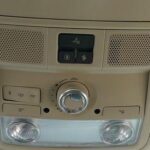Experiencing a check engine light in your Ford F150 along with a P0174 code? This trouble code signals a “Fuel System Too Lean (Bank 2)” condition, indicating that your engine’s computer is detecting an imbalance in the air-fuel mixture on one side of your engine. As an expert at obd-de.com, I’ll break down what this means for your F150, common causes, symptoms, and how to troubleshoot and potentially fix this issue to get your truck running smoothly again.
Understanding the P0174 Code: Fuel System Too Lean (Bank 2) in Your Ford F150
The P0174 code specifically points to Bank 2 of your Ford F150 engine running lean. In simple terms, a “lean” condition means there’s too much air and not enough fuel in the air-fuel mixture being delivered to the engine cylinders. Modern engines strive for a perfect 14.7:1 air-fuel ratio for optimal combustion, efficiency, and emissions control. When the system deviates too far towards the “lean” side, the engine control module (PCM) will attempt to compensate by adding more fuel. However, when these adjustments reach their limit and the lean condition persists, the P0174 code is triggered, and the check engine light illuminates.
Bank 2 refers to one side of your engine. For Ford F150s with V6 or V8 engines, Bank 2 is typically the side opposite to cylinder number 1. It’s crucial to differentiate this from P0171, which indicates a lean condition on Bank 1. While both codes share similar root causes, knowing it’s specifically Bank 2 can sometimes help narrow down the problem.
Common Symptoms of a P0174 Code in Ford F150:
While some drivers might not notice any significant changes initially, the P0174 code can manifest in several symptoms in your Ford F150:
- Check Engine Light: This is the most obvious sign, as the code is designed to alert you to a potential issue.
- Rough Idle or Stalling: A lean mixture can cause unstable combustion, leading to a rough idle, especially when the engine is warm or at a stop.
- Hesitation or Lack of Power: You might experience a noticeable decrease in engine power, particularly during acceleration. The engine may feel sluggish or hesitant to respond to throttle input.
- Misfiring or “Coughing”: In more severe cases, a lean condition can lead to engine misfires, which can feel like a “cough” or stumble in the engine’s performance.
- Poor Fuel Economy: Although less immediately noticeable, a prolonged lean condition can negatively impact fuel efficiency.
Common Causes of the P0174 Code in Ford F150
Several factors can contribute to a lean fuel system condition on Bank 2 of your Ford F150. Here are some of the most frequent culprits:
1. Vacuum Leaks
Vacuum leaks are a very common cause of lean codes, including P0174. Unmetered air entering the intake manifold after the mass airflow sensor (MAF) disrupts the intended air-fuel ratio. In Ford F150s, potential vacuum leak locations to inspect include:
- Intake Manifold Gaskets: These gaskets seal the intake manifold to the engine cylinder heads. Over time, they can degrade, crack, or warp, leading to leaks, especially on one bank.
- Vacuum Hoses: Numerous vacuum hoses are routed throughout the engine bay. Check hoses for cracks, disconnections, or brittleness, particularly those connected to the intake manifold, PCV system, and brake booster.
- PCV Valve and Hoses: The Positive Crankcase Ventilation (PCV) system recycles engine blow-by gases. Leaks in the PCV valve or its hoses can introduce unmetered air.
- Intake Air Boot: The air intake boot connects the air filter housing to the throttle body. Cracks or loose connections here can allow air to bypass the MAF sensor.
- EGR Valve and Gasket: A leaking Exhaust Gas Recirculation (EGR) valve or gasket can also be a source of vacuum leaks.
- Dipstick and Oil Fill Cap Seals: Believe it or not, even a poorly sealing dipstick or oil fill cap can act as a vacuum leak point in some PCV systems.
2. Mass Air Flow (MAF) Sensor Issues
The MAF sensor measures the amount of air entering the engine. If the MAF sensor is dirty, contaminated, or malfunctioning, it may underreport the airflow. This leads the PCM to calculate and inject less fuel than required, resulting in a lean condition. On Ford F150s, the MAF sensor is typically located in the intake air stream, near the air filter box.
3. Fuel Delivery Problems
Insufficient fuel delivery can directly cause a lean mixture. Potential fuel delivery issues in your F150 could include:
- Plugged Fuel Filter: A clogged fuel filter restricts fuel flow to the engine, leading to fuel starvation and a lean condition.
- Weak Fuel Pump: A failing fuel pump may not deliver adequate fuel pressure and volume, especially under higher engine loads.
- Clogged or Dirty Fuel Injectors: Fuel injectors spray fuel into the intake manifold or directly into the cylinders. If injectors become clogged or dirty, they can restrict fuel flow, causing a lean mixture on affected cylinders (potentially Bank 2).
4. PCM Software Issues
In some less frequent cases, outdated PCM software can contribute to lean codes. As engines age and wear, the original fuel maps in the PCM might become less accurate in compensating for these changes, potentially leading to a lean condition and the P0174 code. Check with your Ford dealer for any available PCM software updates for your F150 model.
Diagnosing the P0174 Code on Your Ford F150
Troubleshooting the P0174 code requires a systematic approach. Here’s a diagnostic process you can follow:
- Visual Inspection for Vacuum Leaks: Carefully inspect all vacuum hoses, intake manifold gaskets, and related components mentioned earlier for any signs of damage, cracks, or loose connections. You can use a vacuum gauge or listen for hissing sounds to help pinpoint leaks.
- MAF Sensor Inspection and Cleaning: Visually inspect the MAF sensor for dirt, debris, or oil contamination. You can attempt to clean the MAF sensor using a specialized MAF sensor cleaner. Important: Never touch the sensor wires directly.
- Check Fuel Pressure: Use a fuel pressure gauge to verify that the fuel pump is delivering adequate pressure according to Ford F150 specifications.
- Scan Tool Data Analysis: Use an OBD-II scan tool to read live data, particularly the long-term fuel trim (LTFT) values for Bank 2. High positive LTFT values (e.g., above +10% to +15%) for Bank 2 strongly suggest a lean condition and support the P0174 code. Observe fuel trim readings at idle, 2500 RPM, and under load to gather more diagnostic information.
- Professional Smoke Test: If vacuum leaks are suspected but not easily found, a professional smoke test can be performed. This involves injecting smoke into the intake system to reveal any leaks.
- Injector Testing: If fuel delivery issues are suspected, fuel injector testing (injector balance test, flow test) can be performed by a professional technician to assess injector performance.
Why Addressing the P0174 Code is Important
Ignoring a P0174 code and a persistent lean condition can lead to several negative consequences for your Ford F150:
- Increased Emissions: Lean running engines produce higher levels of NOx (oxides of nitrogen), a significant smog contributor and harmful pollutant.
- Engine Damage: Prolonged lean conditions can cause elevated combustion temperatures, potentially leading to engine overheating, detonation (engine knocking), and damage to valves, pistons, and catalytic converters.
- Reduced Performance and Fuel Economy: As mentioned earlier, a lean condition can negatively impact engine performance and fuel efficiency.
Conclusion
The Ford F150 P0174 Code indicates a lean fuel system condition on Bank 2. Addressing this code promptly is crucial for maintaining your truck’s performance, fuel efficiency, and minimizing harmful emissions. By systematically diagnosing potential causes like vacuum leaks, MAF sensor issues, and fuel delivery problems, you can effectively troubleshoot and resolve the P0174 code. While some repairs, such as cleaning the MAF sensor or replacing a vacuum hose, might be DIY-friendly, more complex diagnoses or repairs related to fuel delivery or PCM issues may require the expertise of a qualified mechanic. Don’t delay in addressing this issue to keep your Ford F150 running optimally for years to come.

